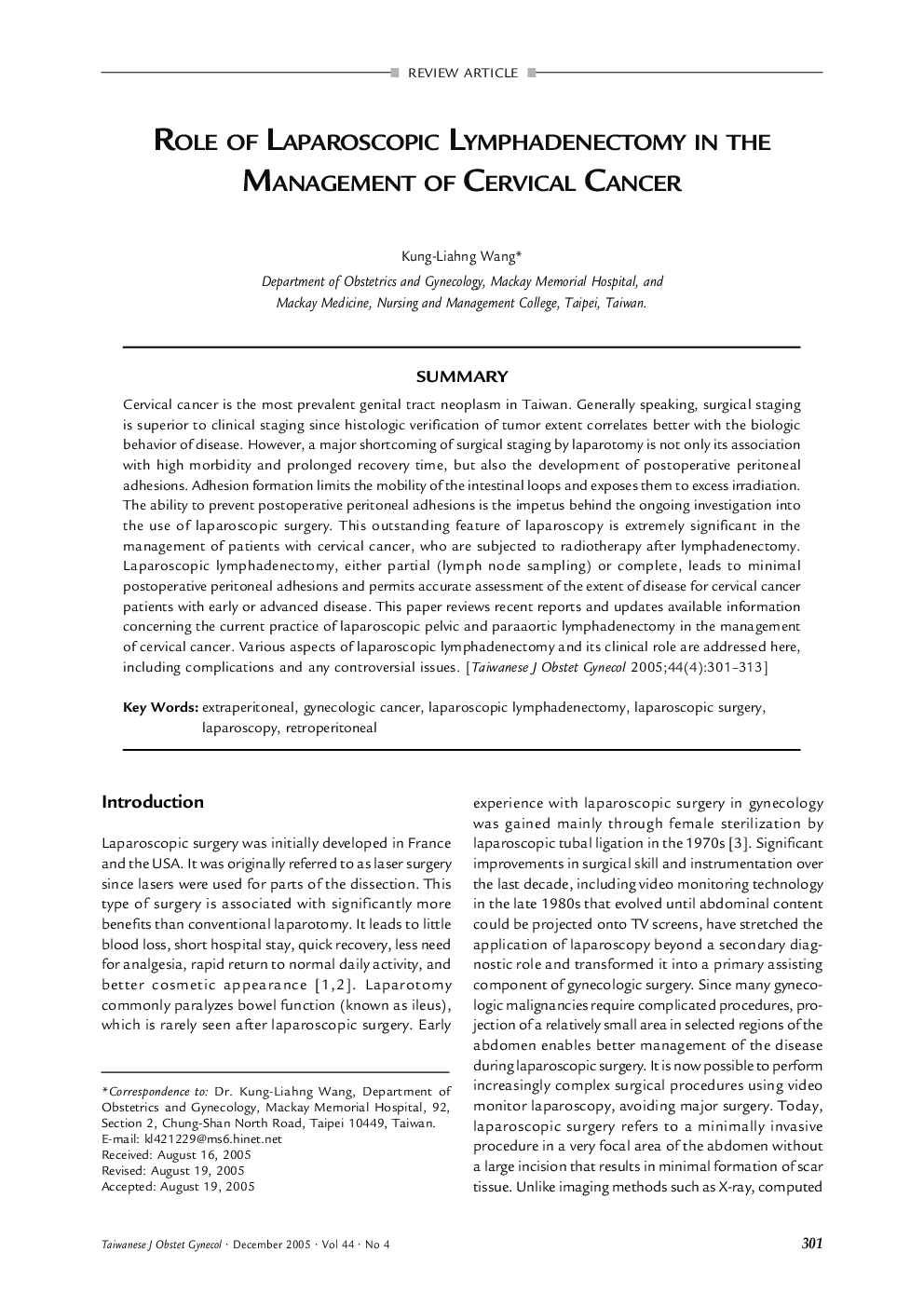| Article ID | Journal | Published Year | Pages | File Type |
|---|---|---|---|---|
| 10070276 | Taiwanese Journal of Obstetrics and Gynecology | 2005 | 13 Pages |
Abstract
Cervical cancer is the most prevalent genital tract neoplasm in Taiwan. Generally speaking, surgical staging is superior to clinical staging since histologic verification of tumor extent correlates better with the biologic behavior of disease. However, a major shortcoming of surgical staging by laparotomy is not only its association with high morbidity and prolonged recovery time, but also the development of postoperative peritoneal adhesions. Adhesion formation limits the mobility of the intestinal loops and exposes them to excess irradiation. The ability to prevent postoperative peritoneal adhesions is the impetus behind the ongoing investigation into the use of laparoscopic surgery. This outstanding feature of laparoscopy is extremely significant in the management of patients with cervical cancer, who are subjected to radiotherapy after lymphadenectomy. Laparoscopic lymphadenectomy, either partial (lymph node sampling) or complete, leads to minimal postoperative peritoneal adhesions and permits accurate assessment of the extent of disease for cervical cancer patients with early or advanced disease. This paper reviews recent reports and updates available information concerning the current practice of laparoscopic pelvic and paraaortic lymphadenectomy in the management of cervical cancer. Various aspects of laparoscopic lymphadenectomy and its clinical role are addressed here, including complications and any controversial issues.
Keywords
Related Topics
Health Sciences
Medicine and Dentistry
Obstetrics, Gynecology and Women's Health
Authors
Kung-Liahng Wang,
